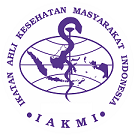Risk Factors of Prenatal and Postnatal Depression
Abstract
Background: The postpartum period is the time when many women or mothers ex
References
Abdollahi F, Zarghami M, Sazlina SG, Zain AM, Mohammad AJ, Lye MS (2016).
Anding JE, Rohrle B, Grieshop M, Schucking B, Christiansen H (2016).
Bansil P, Kuklina EV, Meikle SF, Posner SF, Kourtis AP, Ellington SR, Jamieson DJ (2010). Maternal and fetal outcomes among women with depression, J Women
Cheng ER, Rifas SL, Perkins ME, Rich JW, Gillman MW, Wright R, Taveras EM (2016). The influence of antenatal partner support on pregnancy outcomes. J Women
Choi SY, Kim EJ, Ryu E, Chang KO, Park MN (2012). Postpartum depression and parental self-efficacy: A comparison of Native Korean and Vietnamese immigrant mothers in Korea. J Transcult Nurs, 23(2): 181
Endraswara S (2017). Berpikir Positif Orang Jawa. Yogyakarta: Pustaka Narasi.
Haslam DM, Pakenham KI, Smith A (2006). Social support and postpartum depressive symptomatology: the mediating role of maternal self-efficacy, Infant Ment, 27(3): 276
Hutauruk IS (2011). Indonesian version of the Edinburgh postnatal depression scale: Cross-cultural adaptation and validation. Jurnal Ilmiah Psikologi, 5(2). https://www.ejournal.gunadarma.ac.id/index.php/psiko/article/view/390.
Kargar JM, Zare A, Taghizadeganzadeh M, Rahmanian KA (2014). A study of marital satisfaction among nondepressed and depressed mothers after childbirth in Jahrom, Iran, 2014. Glob J health Sci, 7(3): 140
Kepple A, Lee E, Haq N, Rubinow DR, Schmidt PJ (2016). History of Postpartum Depression in a Clinicbased Sample of Women with Premenstrual Dysphoric Disorder. J Clin Psychiatry, 77(4): 415-420. https://doi.org/10.4088/JCP.15m09779.
Kohlhoff J, Barnett B (2013). Parenting self-efficacy: Links with maternal depression, infant behaviour and adult attachment. Early Hum Dev, 89: 249
Kusumastuti, Astuti DP, Hendriyati S (2015). Hubungan Karakteristik Individu dengan Depresi Postpartum pada Ibu Postpartum di Rumah Sakit Umum Daerah Kabupaten Kebumen (Relationship of Individual Characteristics with Postpartum Depression in Postpartum Mothers at the Kebumen District General Hospital). Jurnal Involusi Kebidanan, 5(9): 1
Lee JY, Hwang JY (2015). A study on post-partum symptoms and their related factors in Korea. Taiwan J Obstet Gynecol. Elsevier Ltd, 54(4): 355
Malus A, Szyluk J, Galinska SB, Konarzewska B (2016). Incidence of postpartum depression and couple relationship quality. Psychiatr Pol, 50(6): 1135
Mohammadi A, Aghdam GA, Ranji S (2011)
Papamarkou M, Sarafis P, Kaite CP (2017). Investigation of the association between quality of life and depressive symptoms during postpartum period: A correlational study. BMC Women
Perry SE, Marlyn J, Hockenberry, Deitra LL, Lisa KL, David D, Cheryl AS (2014). Maternal Child Nursing Care. Fifth. Canada: Elsevier Mosby.
Roomruangwong C, Withayavanitchai S, Maes M (2016). Antenatal and post-natal risk factors of postpartum depression symptoms in Thai women: A case-control study. IJSHRH. Elsevier BV, 10: 25
Soep (2011). Penerapan Edinburgh Post-partum Depression Scale Sebagai Alat Deteksi Risiko Depresi Nifas pada Primipara dan Multipara (Application of Edinburgh Post-partum Depression Scale as a Detection Risk for Post-partum Depression in Primipara and Multipara). Jurnal Keperawatan Indonesia, 14(2): 95
Stoner R, Camilleri V, Calleja AJ, Schembri WP (2017). The cytokine hormone axis
Stuart G (2013). Principles and Practice of Psychiatric Nursing. St. Louis Missouri: Mosby.
Downloads
Published
2020-01-16
Issue
Vol. 5 No. 1 (2020)
Section
Articles




1.jpg)








